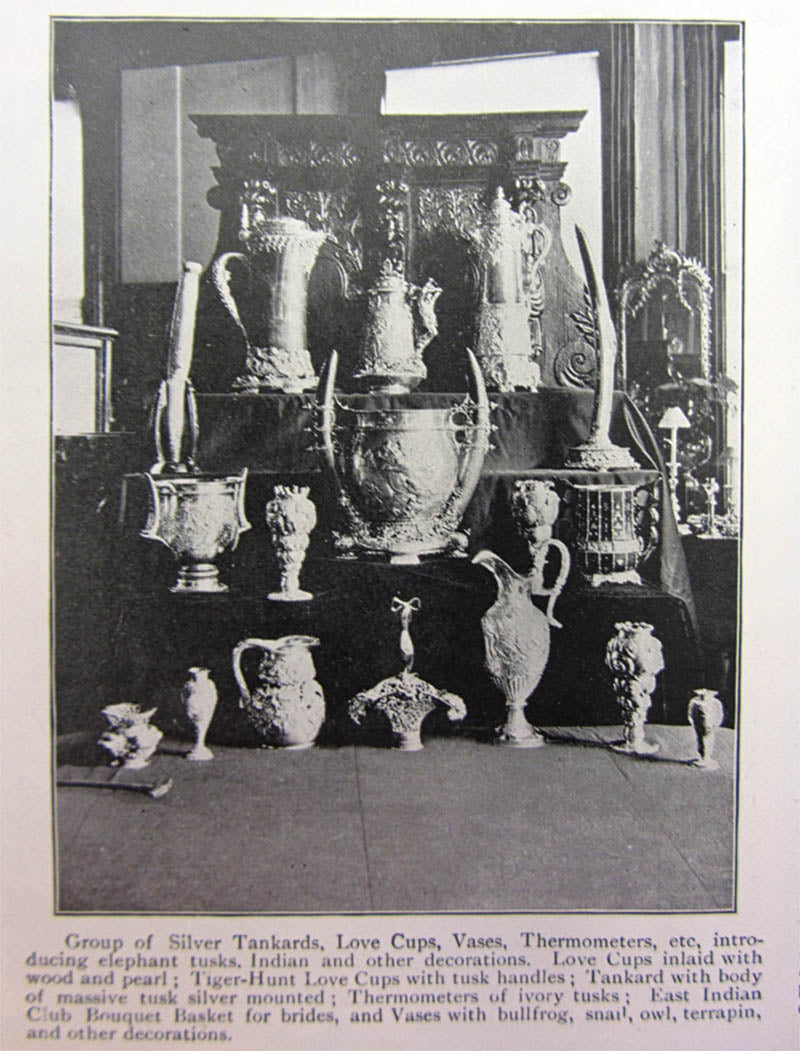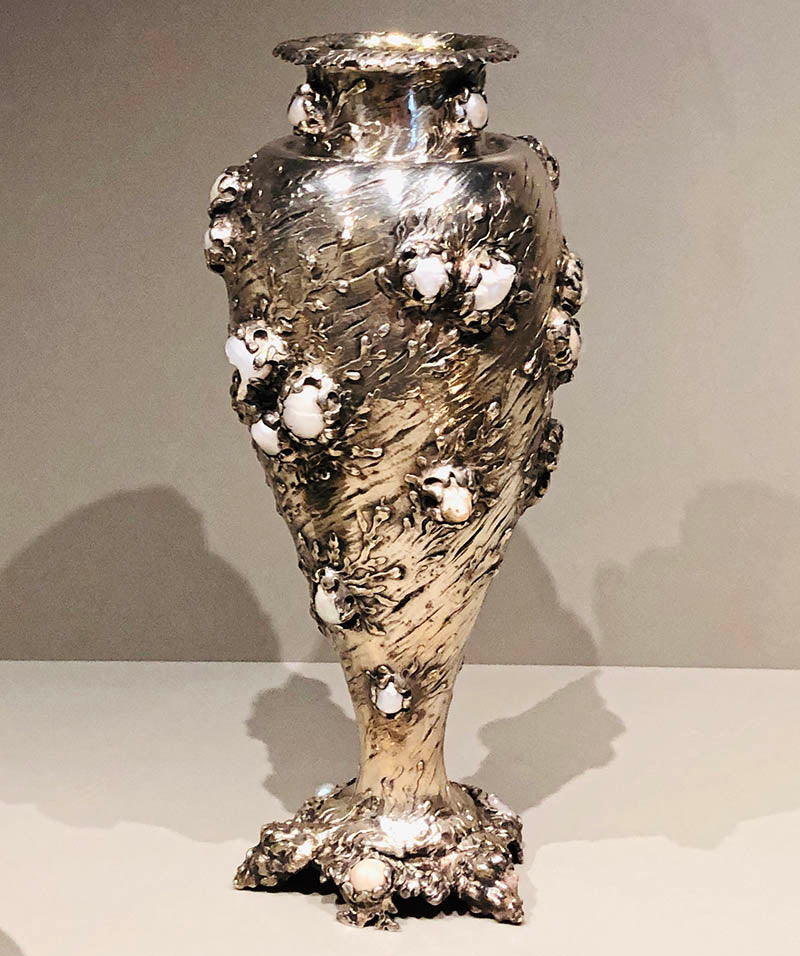Your Cart is Empty
FREE standard shipping to the continental US.
FREE standard shipping to the continental US.
FREE standard shipping to the continental US.
June 03, 2020 6 min read
Tiffany & Co. at the 1893 Columbian Exposition, Chicago World's Fair
As travel improved and international commerce became more important during the 19th century, fairs and exhibitions became destination events for the rapidly expanding middle and upper classes. The first "international" exposition was held in London in 1851, known as the "Crystal Palace" for its glass building.

Soon, world's fairs were held every several years, and luxury goods makers found a perfect method to market their most important pieces. Not only did throngs of increasingly wealthy people attend the 'must-see' fairs, but press reports could so influence public demand that successful exhibitions could change a company's fortunes.
Tiffany & Co. discovered this after their extraordinary success at the 1878 Paris Exposition when English designer Christopher Dresser named them "first silversmiths of the world," and they had a difficult time keeping up with orders.

The 1893 Columbian World's Fair was truly spectacular. To celebrate the 400th anniversary of Columbus finding the new world, an entire city was built on the shores of Lake Michigan in Chicago. It covered 686 acres and included 300 specially constructed buildings. (1)
In the course of the six months it was open in 1893, there were 27.5 million visitors (2) to the fair, an astonishing number in light of the fact that the US census counted 63 million Americans in 1890. Considering that it occurred during a severe economic contraction, the attendance made it an even greater success.

The Manufactures and Liberal Arts Building, where Tiffany's exhibit was in the center, was the largest building built to date. Three times the size of St. Peter's in Rome, it covered 31 acres with the roof rising 245 feet with no supporting columns in the center. (3) The central hall could 'comfortably' seat 50,000(4), and 150,000 people crowded in on opening day. (5)
Tiffany's pavilion, at the center of the building, was shared with Gorham and the Tiffany Glass Company. Built by Tracy Brothers of Waterbury, Ct, it was initially contracted at $25,000.00 but eventually cost $100,000.00 to complete. (6) (That would be a few million in today's dollars.)

Many of the objects on show were prohibitively expensive to all except the very wealthiest clients. Companies took a significant financial risk making these masterpieces; for instance, Gorham's Nautilus Centerpiece made for the Columbian Exposition did not sell until 1921, 28 years later. (7)
According to The New York Times, Tiffany's exhibit at the fair: "undoubtedly contains the greatest number of costly and beautiful gold and silver ornaments and precious stones that was ever gotten together in the country by a single house. There are more than a thousand pieces of special production…some of which have required two years to complete." (8)

The Art Journal of London noted:
Passing to the exhibit of Messrs. Tiffany & Co., of New York, one finds a display more varied in expression and original in design, more distinctive and individual, than the work of any other firm in the art metal group. And above all we must note the distinctively American characteristics of many of the exhibits here. (9)
Tiffany & Co.'s exhibit at the fair included 1159 pieces – while some were production pieces, many were unique and extraordinary masterpieces designed and made for the fair. They exhibited:
 Selection of Tiffany Silver at the fair. ("The Tiffany Exhibit" in The Illustrated American, May 20, 1893, p. 593.) In this grouping is The Tiger Hunt Cup, (center) now at the Cincinnati Art Museum, a cup made of silver, amboyna wood and other exotic materials (center right) now at The Metropolitan Museum of Art and the Wild-Rose Vase (lower left) that we had several years ago.
Selection of Tiffany Silver at the fair. ("The Tiffany Exhibit" in The Illustrated American, May 20, 1893, p. 593.) In this grouping is The Tiger Hunt Cup, (center) now at the Cincinnati Art Museum, a cup made of silver, amboyna wood and other exotic materials (center right) now at The Metropolitan Museum of Art and the Wild-Rose Vase (lower left) that we had several years ago.Under the direction of Edward C. Moore, and later Charles T. Curran, Tiffany & Co.'s silver department spent four years planning for and creating the objects that were sent to the 1893 fair. (11) Their stunning exhibition was reported on and written about all over the country and many parts of the world. Tiffany & Co. won the grand prize for silverware (12) along with 55 other prizes (13), 15 of those for for silver. (14) Some items were purchased by museums at the fair. (15) One European princess was so impressed by the display she named Tiffany & Co. court jewelers on the spot. (16)

Along with the Magnolia Vase, two "Viking Punch-Bowls" of decarbonized iron (so it would be easier to work) were the most talked about metal wares by Tiffany, "The great magnolia enameled vase, the American flower set in Souchow chasing, the Viking bowls in etched iron and damascene work, are original and decided advances in the silversmith's art." (17) Two of Tiffany & Co.'s awards were for "damascening of gold and silver on iron, etching on decarbonized steel [sic.]" (18)

Of the silver pieces that Tiffany sent to the exhibition, 37 were vases, 16 of those were enameled, and 7 were decorated with floral champlevé enamel decoration designed by Charles T. Curran. (19) The largest and most famous of these is the "Magnolia Vase." Tiffany won an award at the fair their champlevé enameled pieces. (20) The "Daisy Vase," another floral enameled vase from the fair, sold at Christie's in New York (January 20, 2005) for $284,800.00 and the "Trout Vase," now without the original enamel, sold at Sotheby's (January 20, 2017) for $275,000.

The unique masterpieces made by Tiffany and sent to the fair were designed and executed to be shown in a spectacular setting and sold to their very best clientele.
Endnotes:
Sign up to get the latest updates and current musings in our occasional newsletter…
